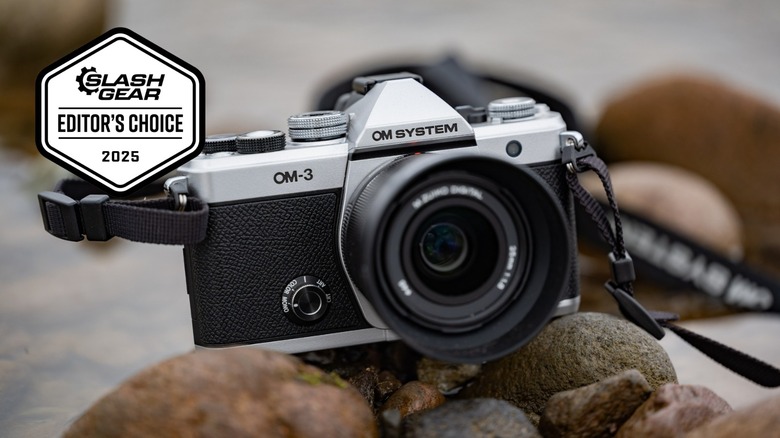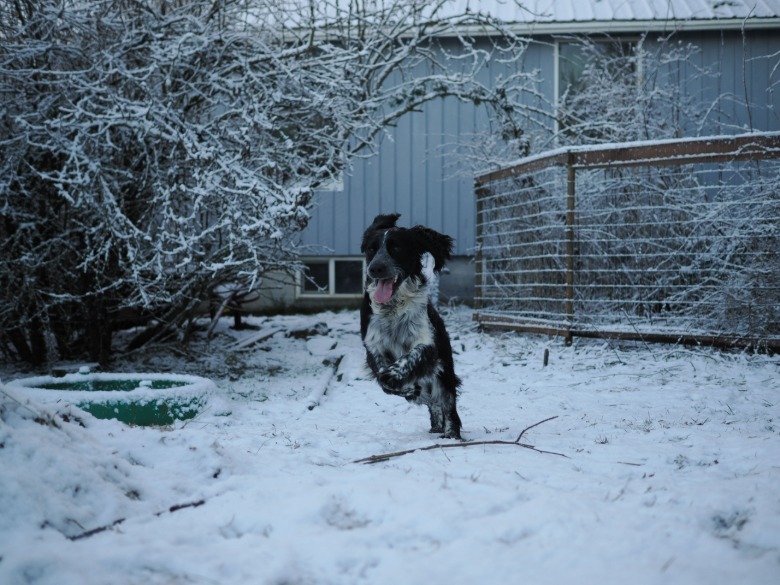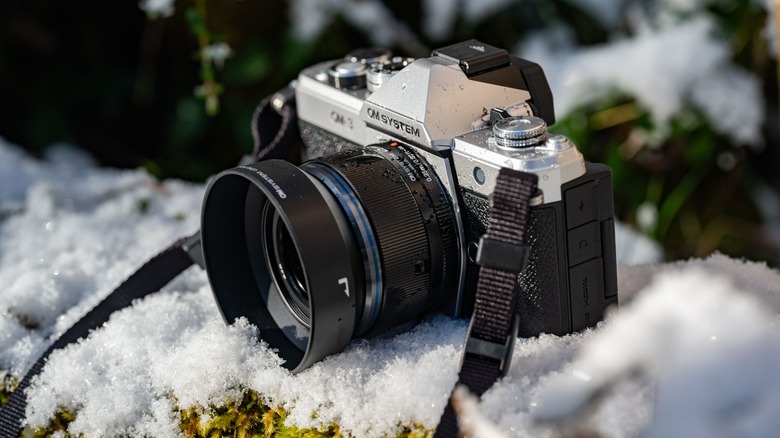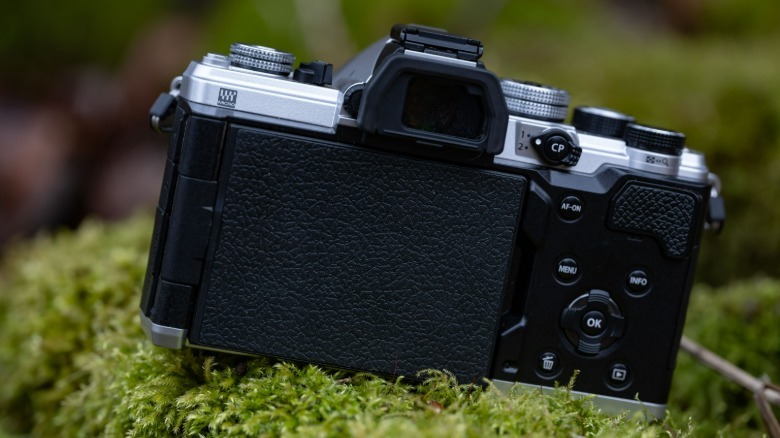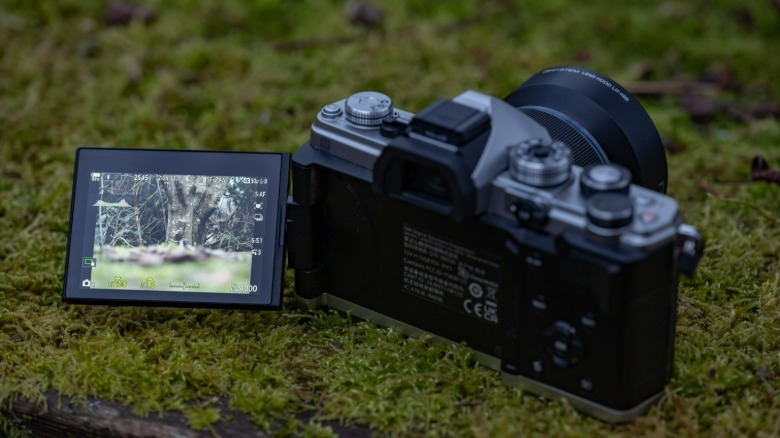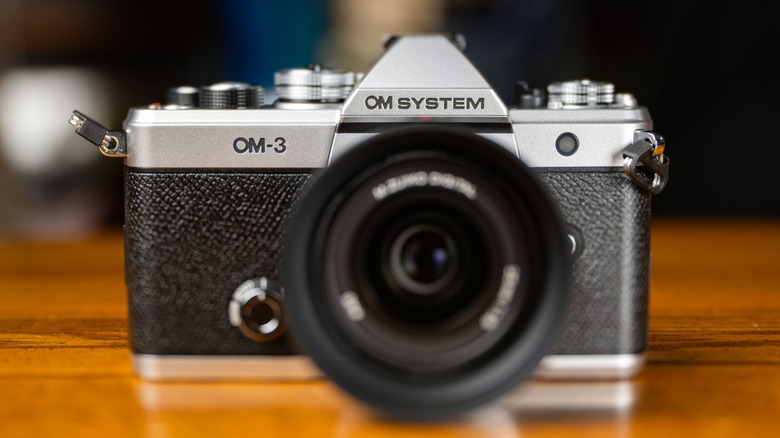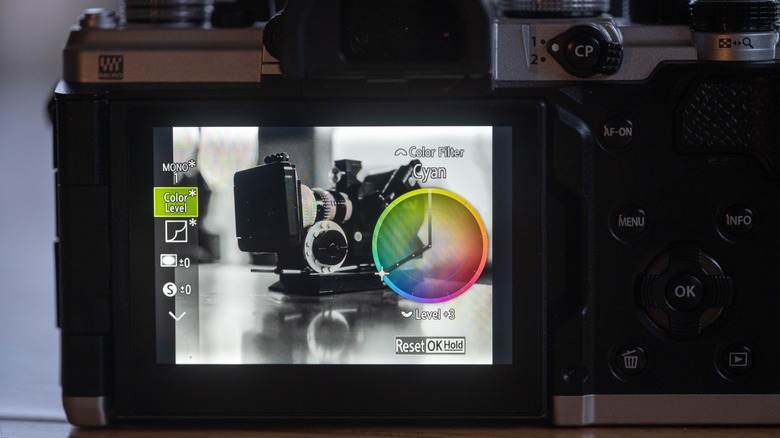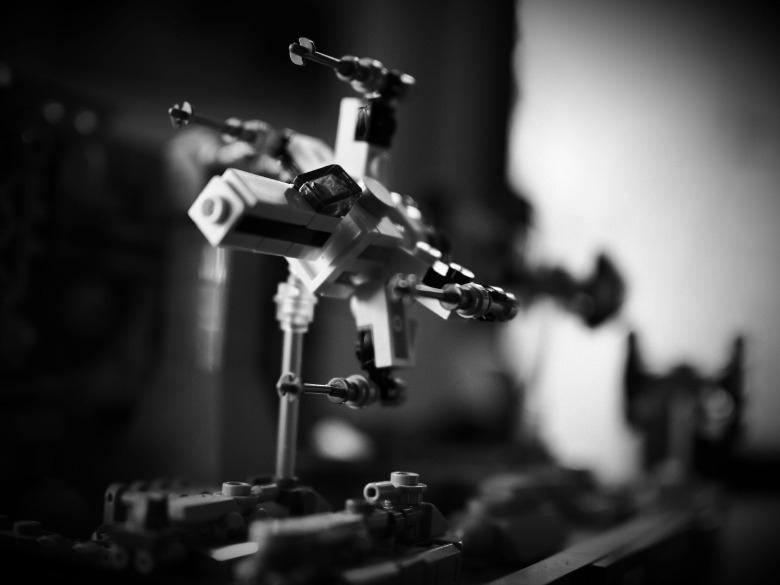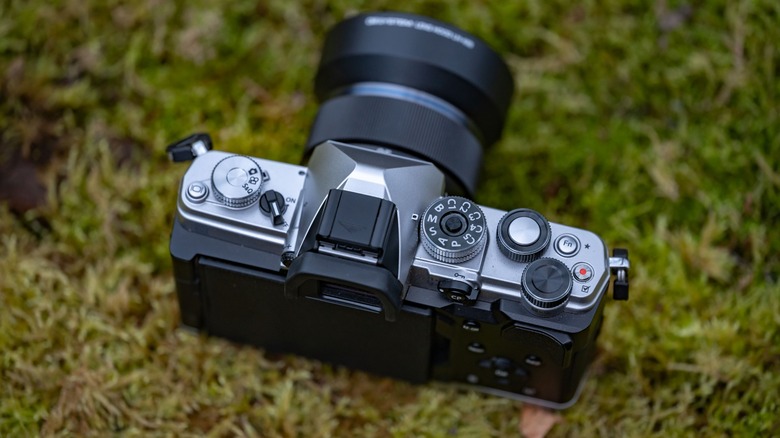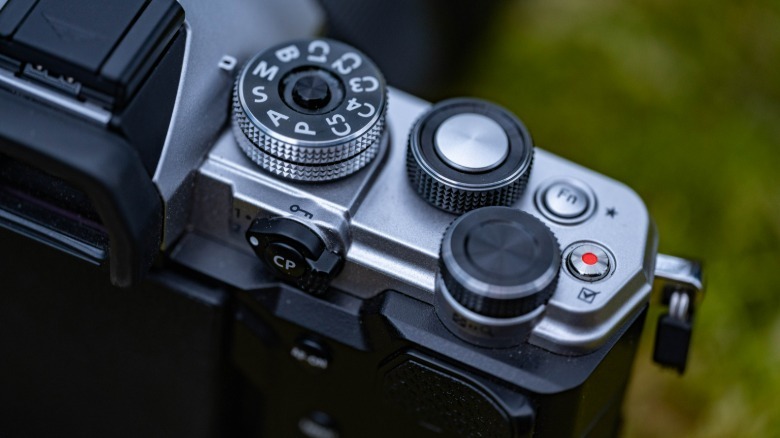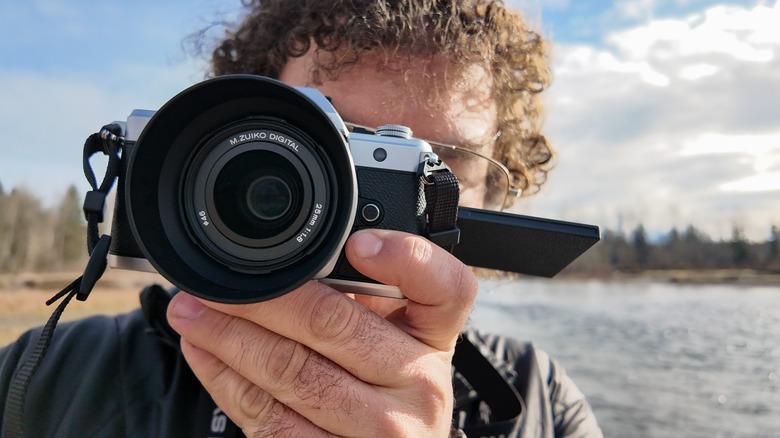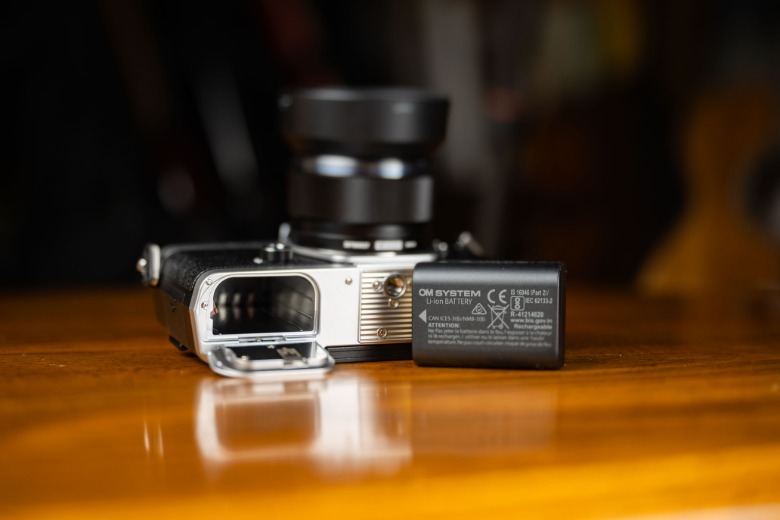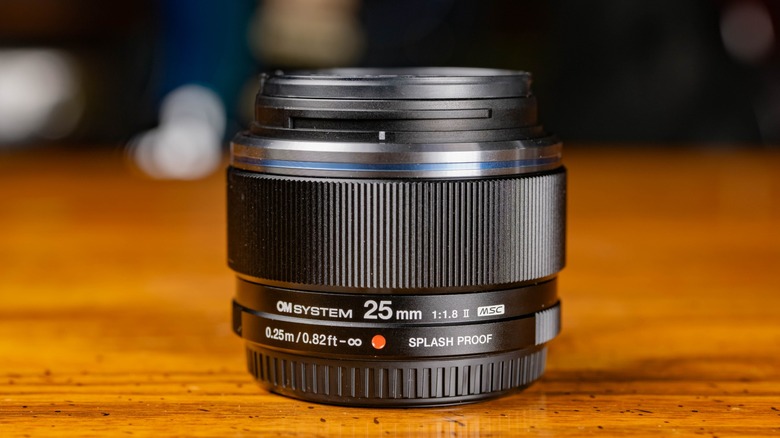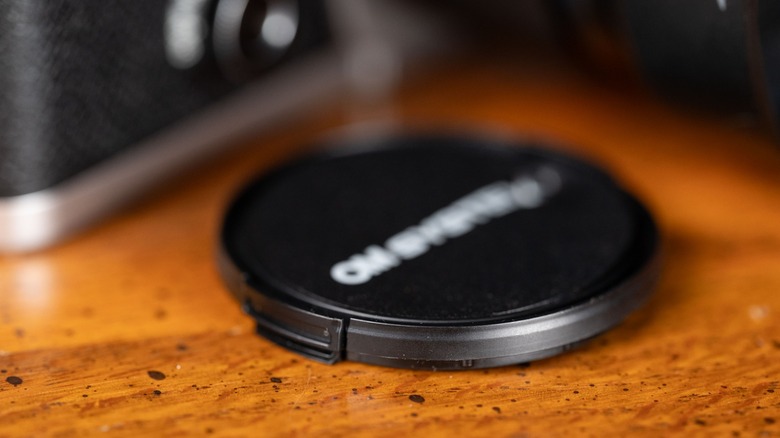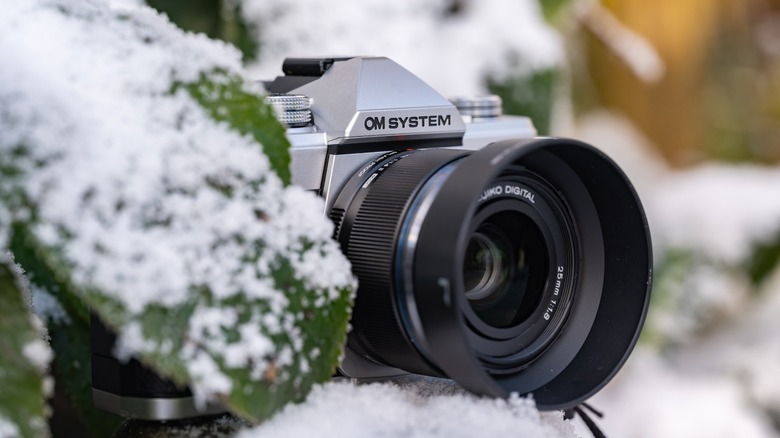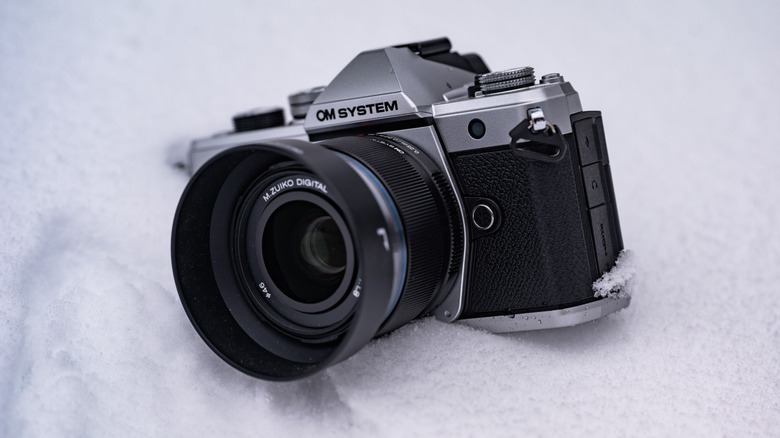OM System OM-3 Review: A Retro-Style Camera With Few Compromises
- Beautiful retro-style look
- Excellent build quality and tactile controls
- Rugged and weather resistant
- Compact form factor
- OM System computational features
- Great in-camera digital filter system
- Considerable price
We may receive a commission on purchases made from links.
Retro camera designs are all the rage right now, and the OM-3 from OM System (formerly Olympus) is the latest such camera to pair a cutting-edge camera with classic camera vibes. The silver metal and leather-texture grip with that angular viewfinder on top is unmistakably the look of a camera from 50 or 60 years ago, but inside are essentially the guts of a flagship OM-1 Mark II. This is a micro 4/3 (M4/3) camera, meaning that it's equipped with a sensor that's smaller than that found in a full frame camera, but much larger than what you'd find in any phone.
The OM-3 has a lot going for it, but it also faces stiff competition, so a big question to answer is how it stacks up, and whether or not it's the right retro-style camera for you. There's a lot of potential here, and it'll be interesting to see if OM System can find a place for itself alongside the likes of Fujifilm and Nikon in this space.
OM System provided the OM-3 and the M.ZUIKO 25mm f/1.8 II for this review.
Good photo and video quality
The 20.37MP sensor in the OM-3 is inherently limited by its relatively small size compared to larger sensors, but it still produces beautiful images, and there are definite advantages to a smaller sensor that help make up for a relative lack of performance in areas such as resolution. This is primarily found in terms of how small lenses are for the system, the smaller size of the camera itself, and in its image stabilization performance.
Images are quite sharp, and noise is well controlled. If you like how the OM-1 Mark II renders photos, then you'll also like the OM-3. Every camera manufacturer has their own color science which grants a subtly different look, and OM System certainly has their own aesthetic which I personally like.
For video, you can shoot in 4K at up to 60fps, and there's a 10-bit log profile. The OM-3 performs well at recording video footage overall, and it can absolutely produce professional results, but it's definitely first and foremost a still photography camera. That's not a bad thing, and it's good to have solid video capability in a camera which prioritizes still photo performance.
Gorgeous, rugged, retro design matches looks with top-quality materials.
The OM-3 doesn't just look great, it backs up its classic appearance with quality materials and construction that rival the old film cameras on which it's modeled. All that metal gives the camera a reassuring heft while not adding so much weight as to compromise it in terms of its overall portability.
I really like the grip material OM Systems has used here, which is made to resemble the look and feel of leather. Despite the slim profile of the camera, it nonetheless seems surprisingly ergonomic to me, which is unexpected given my large hands and preference for cameras with beefy grips. The rear thumb rest certainly does a lot of the heavy lifting when it comes to ergonomics here.
To go along with an alluring exterior, in terms of durability and weatherproofing the OM-3 carries on OM Systems high standard of creating cameras for any conditions. With freezing rain, snow, and bitterly cold temps in the midst of a Pacific Northwest winter, I certainly put the OM-3 to the test out in the field. With an IP53 rating, the OM-3 is resistant to dust and spraying water, so you don't need to worry about it so much on a trip to the beach, or on a wet day in the temperate rainforest.
I found the fully articulating touchscreen to be bright and responsive. The electronic viewfinder isn't as high resolution as that found on the OM-1 Mark II, but I found no reason to complain about it. Overall, both displays on the OM-3 put in a more than acceptable performance. The OM-3 also only has a single SD card slot, unlike the OM-1 Mark II which features two SD card slots.
Computational photography features that give OM System an edge
Live ND and Graduated Live ND are a big part of what makes the OM-1 Mark II such a great camera. They perform very well and provide a decent alternative to having to carry and fumble with physical filters. They are excellent at smoothing water with long exposures even in bright conditions, or for dealing with overly bright skies. Keep in mind that they aren't a perfect replacement for real ND filters; for example, I once tried to use Live ND in a thunderstorm, but the camera failed to pick up the lightning strikes. With that said, in most scenarios I've found Live ND to perform very well indeed, and I wish every camera system offered it.
High resolution shooting modes and HDR are also available, so the OM-3 can overcome some of the limitations of its relatively small sensor format in this way. Just keep in mind that a tripod is almost essential for most of these computational photography modes. These modes are easily accessible through a dedicated "CP" button on the back of the camera, which is really convenient.
Pre-processing tools are basically in-camera Lightroom
A really cool feature of the OM-3 is its in-camera filters, which are accessed through a dial on the front of the camera. Not only do you get a ton of preset options here, but there's a deep level of customization available to get exactly the look you're going for. Yes, you could just shoot in RAW and apply such effects as black and white conversion or alter the saturation of particular colors in post processing, but there's something to be said for getting the shot just right in the moment, and no camera I've used with in-camera creative filters does this better than the OM-3.
For example, when I wanted to photograph my black and white dog Scuppers on a brown couch, I set the filter dial to shoot in black and white, then selected a filter (cyan) and used that to darken the fabric of the couch while keeping Scuppers well exposed. I then further tweaked the exposure using the curves tool, and finally added a little bit of vignetting. The final image is something I would be perfectly happy to print straight out of camera without any post-processing.
While these tools are not anywhere near as extensive as in a program like Adobe Lightroom Classic, you can get the same sort of results without first having to go through the process of importing them onto a separate device. Composing your shot while also being able to see the final output can certainly be utilized to produce better images, and it's a lot of fun.
Modern control scheme is excellent, but slightly at odds with the retro design
The advantage of a modern control system is that pretty much everything is customizable, so if the way a particular button, switch or knob doesn't quite work for you in its default function, you can change that. While I would have liked to have seen the dials on top of the camera with manual shutter speed, ISO, and exposure compensation markings, the customizable modern system enables the aforementioned digital filters to be quickly and intuitively adjusted.
After spending more time with the camera, I came to better appreciate the control scheme, and my initial critiques of it began to fade as I crested the learning curve. The only thing I really would like to see here is a joystick on the back of the camera such as is present on the OM-1 Mark II, which would have made adjusting the focus area and other settings much easier.
Great autofocus, battery life, and image stabilization
You're getting a really solid autofocus system with the OM-3, including some of the best subject detection available. It's able to immediately and reliably lock onto the eyes of animals and people, with other modes available for inanimate subjects. However, you have to select an individual subject mode, rather than having the camera automatically detect which subject mode it should use. With that said, the OM-3 offers among the best AF systems in its price range.
Battery life is also very good, so you don't have to carry a ton of spares with you (though it's also smart to have one extra battery, no matter how good a camera's battery life may be). You also get that top-notch OM System image stabilization (IS) (a perk of a M4/3 sensor), which in combination can deliver a minimum of 5.5 stops of image stabilization, and goes all the way up to 7.5 stops with a compatible lens featuring its own IS. Even without a stabilized lens, the IBIS (In Body Image Stabilization) was easily able to get me blur-free images with a 1/15 shutter speed on the 25mm f/1.8 II lens.
In video this also means you can achieve super-stable shots that rival GoPros and gimbals. The similarly impressive IS system in the OM-1 Mark II, is part of why I actually included that camera in my roundup of the best action cameras of 2025. The OM-3 isn't quite as good for action given its lower-performance shutter, but it's still an excellent choice for shooting high octane action in challenging scenarios.
M.ZUIKO Digital ED 25mm f/1.8 II lens
I tested the OM-3 alongside a new lens from OM System, the upgraded mark II version of their 25mm f1.8 lens. Accounting for the 2X crop factor of a micro 4/3 sensor, this has the equivalent field of view of a 50mm lens on a full frame camera. It's a nice focal for testing out a camera, and was perfectly paired with the OM-3. It's a very sharp lens, with no immediately obvious optical flaws. It can deliver very nice out of focus areas with its bright aperture, though keep in mind that though the field of view is equivalent to 50mm, you aren't going to get the equivalent dramatic bokeh of a 50mm f1.8 lens.
The big upgrade here over the original version of this lens is that it's now weathersealed, meaning that with it you can take full advantage of the weathersealing in the OM-3. It's great to match a rugged camera with an equally rugged camera.
I found this lens to be an ideal pairing with the OM-3 due to its petite size. It balances very well with the camera, and fits nicely with the aesthetic. If you're going to get the OM-3, I'd definitely recommend picking up either this optic or the M.ZUIKO Digital ED 17mm f1.8 II, which OM Systems also announced this month. That will be perfect if you prefer its 34mm equivalent field of view to the 50mm equivalent of the 25mm f/1.8. Alternatively, the OM-3 is also available in a bundle with the M.ZUIKO Digital ED 12-45mm F4 PRO lens if you're looking for a more versatile zoom, though personally I feel the OM-3 is better suited to be used with small, lightweight prime lenses.
Excuse me while I rant about a lens cap
The included lens cap does let down the otherwise stellar build quality of the M.ZUIKO 25mm f1.8 II lens. This lens cap is flimsy and difficult to operate with the lens hood on (and I always use a lens hood), and it's not secure on the lens. These problems came to a head during my aforementioned photography session with my dog Scuppers. After I'd taken the shot, I replaced the lens cap, but as I was reattaching it to the lens I experienced difficulty with the latching mechanism of the lens cap result in the lens cap falling to the carpet, wherupon Scuppers immediately scooped it up.
Normally, this would be of little concern. This is not my first time yanking a lens cap from the jaws of an ill-mannered hound (or spaniel as the case may be), and typically they come away with little more than a scratch. However, the material of this particular lens cap is so thin it was immediately covered in tooth marks after mere moments in Scuppers' mouth.
Don't get me wrong, this isn't anything against the camera or the lens, but this lens cap did cause me irritation throughout my testing of the system. The 25mm f1.8 II is such a nice lens it seems a real shame to attach this cheap piece of plastic to it, and worse, if it's so easily damaged and does not fit securely on the lens, then it hardly provides the necessary protection which is its purpose. Fortunately, you can buy higher quality third party lens cap for around $7 a pair on Amazon, which would be my first move upon purchasing what is in every other way an excellent optic.
A high price compared to the competition
With a $1,999 MSRP, the OM-3 isn't exactly a great value for money. You can pick up the flagship OM System OM-1 Mark II for that price (I even saw it for around $200 less on sale at Walmart while writing this review), or one of several retro themed cameras from other brands for less money. The full frame Nikon Zf is $200 less, while the fixed-lens Fujifilm X100VI with its APS-C size sensor is $400 less. Those cameras are going to deliver better image quality, thanks to their larger sensors. With this in mind, you are paying a premium for a M4/3 camera, which seems somewhat counterintuitive.
As good as the OM-3 is, it would be a lot more competitive if it started at least a few hundred dollars cheaper. It would have been a much easier camera to recommend if it was priced around $1500. However, with that said, it is just about as capable a camera as the OM-1 Mark ii, and with the wonderful tactile experience of the controls and its beautiful retro looks, there is certainly some justification to the price when viewed in that light.
Conclusion
While there are a few gripes with the OM-3, for the most part it's a fantastic camera, and one of the best M4/3 cameras out there. However, when it's possible to find the more capable OM-1 Mark II for less, it becomes very hard to justify the high cost of the OM-3, particularly taking into consideration competition from other manufacturers. It's a shame, because otherwise the OM-3 is a really solid camera that has a lot to recommend it.
If you're a M4/3 photographer looking for a retro-style body that (mostly) doesn't compromise on its features and capabilities, then you will love the OM-3. I want to stress how much fun I had shooting with it. Operating the camera's tactile dials really is satisfying, and the quiet little snick of the mechanical shutter is something I came to enjoy as well. It can go everywhere with you much more easily than most cameras featuring larger sensors, and it takes great photos, particularly if you like to get creative in the field with in-camera effects.
The OM System OM-3 is available starting at $1,999 for pre-order from B&H, OM System's online store, and other retailers. It is expected to ship February 27th, 2025.
